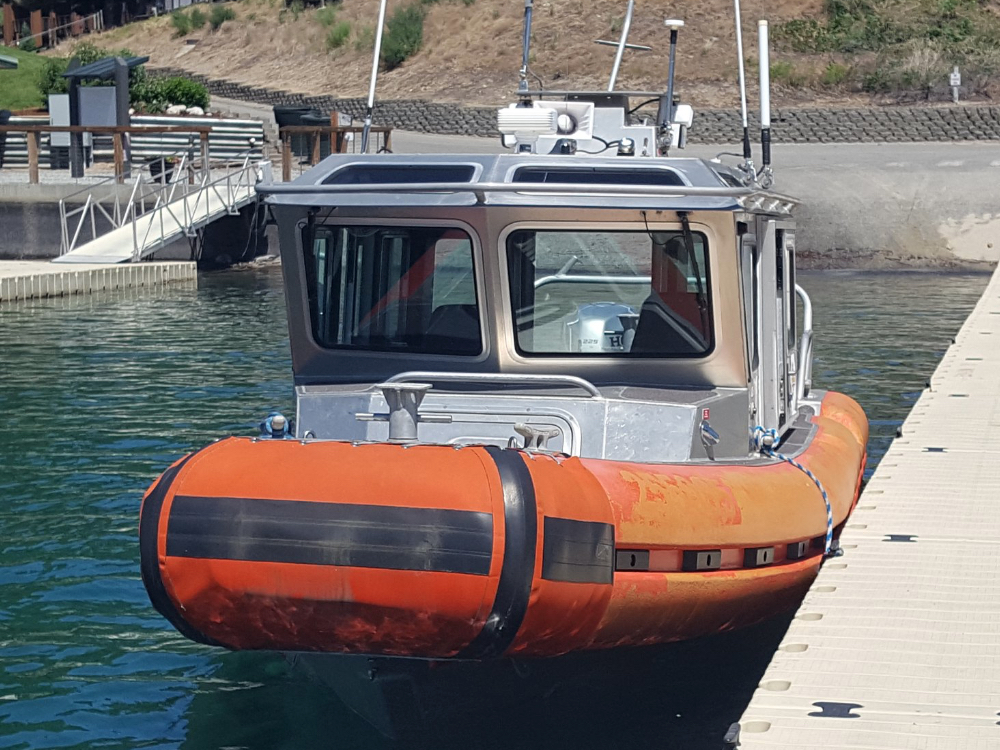“Water conditions this year are not normal” – Deputy Mike McLeod
information released by Chelan County Sheriff’s Office
As the temperature rises, so does the popularity of recreation at area lakes and rivers. On the surface, rivers, streams and lakes can seem calm, warm or shallow. Yet every year even the most experienced recreationists can become victims to deceptively strong currents, cold water temperatures, and unexpected changes in depth.
Chelan County Sheriff’s Deputy Mike McLeod, who has served on the Sheriff’s Swift Water Rescue Team for 15 years, has been busy responding to regular rescue calls on area lakes and rivers. He warns anyone recreating on the water that conditions this year are not normal.
“This year, our rivers have been flowing much higher for much longer,” McLeod said. “With the cold spring and late storms, it has kept snow pack levels higher for longer – that directly reflects conditions at our local rivers and lakes. On top of this, we’re also seeing that people aren’t prepared for these conditions when they get out on the water.”
“It’s vital that people scout their routes before they jump in a kayak or on an inner tube,” said Sgt. Jason Reinfeld of Chelan County Emergency Management. “Know how conditions will change from your put-in to your take-out spots.”
“You don’t want to be on a river and suddenly realize your take-out spot has a hazard such as rapids or waterfalls that would impede your ability to get out safely,” Reinfeld said. “Know the hazards on the water before you get on it.”
“Personal floatation devices are also essential for everyone recreating in the water, regardless of your swimming ability,” McLeod added. “I was a nationally ranked swimmer when I was in high school and I still use a life jacket on our local rivers and lakes.”
Whether you’re floating down a river, fishing, or cooling off from a long day’s hike, it is important to understand water safety in and around these tempting waters. Please keep these tips in mind if you are headed to an area lake or river:
Be Prepared, Know Your Limits
· Choose swimming areas carefully and swim only during low-water conditions.
· Use life jackets that meet U.S. Coast Guard requirements when boating, regardless of distance to be traveled, size of boat or swimming ability of boaters.
· Swimming in lakes and rivers is more challenging than a swimming pool, so don’t overestimate your abilities or those of any children in your group.
Cold Water Temperature
· Don’t be fooled by warm air temperatures. Even on a nice sunny day, water temperature can be extremely cold below the surface. Many Washington lakes and rivers stay below 60 degrees most of the year.
· The shock your body experiences in cold water increases the risk of drowning, and hypothermia can quickly set in and overwhelm even the strongest of swimmers.
Rivers and Streams
· Don’t float a section of river that no one in your group is familiar with – there can be hidden hazards that are difficult to see from the banks. Consider using a qualified local guide service if you are unfamiliar with a river.
· Avoid rock hopping. Stream polished rocks along the water’s edge may be slippery when wet or dry. A misstep may send you into the water.
· If you choose to cross a stream by going through it, study the area first. Avoid deep and/or swift water.
· If you are crossing a stream, unbuckle your pack’s waist strap so you can shed it if you fall to prevent being pulled under by its weight. Consider putting your gear in a waterproof pack, which becomes a floating device to help your head stay above water.
· Do not tie yourself into safety ropes — they can drown you.
· If you fall into fast-moving water, do not try to stand up. The force of the water will push you over and hold you under. Most drownings result from getting a leg or ankle caught in an underwater rock ledge, between boulders or snagged in tree limbs or other debris. Lay on your back with your feet pointing downstream and toes pointing up toward the surface. Always look downstream and be prepared to fend off rocks with your feet.
Additional resources are available from the following sites:








